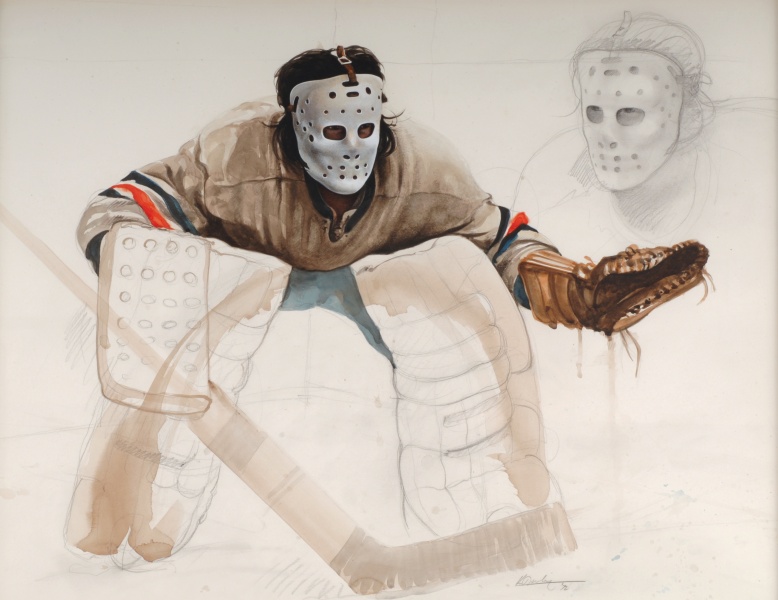
Danby show delivers easygoing, iconic images
by Peter Goddard, The Star, Entertainment 06 Dec 2008
These days it's reasonable to think that little media attention might be paid to a Ken Danby show at the conservative Odon Wagner gallery – especially from critics interested in what's new and cutting edge.The goalie image in Danby's signature painting, At The Crease – it wasn't Ken Dryden, the artist always insisted – turns up on sports memorabilia websites more than art sites.
So, does being this out-of-fashion mean something new? With that question in mind I knew I had to attend a recent reception for "The Graphic Works of Ken Danby".
Two other factors took me to the Wagner Gallery at 172 Davenport Rd., where the show continues until Dec. 20 (and where there'll be a show of Danby paintings next fall). "Graphic Works" is the first show for the painter/printmaker since his unexpected death, at age 67, in fall 2007 while on a canoeing trip in Algonquin Park with his wife, Gillian, and some friends.
Secondly, it brings together all the prints he made up until about 2004, according to gallery-owner Wagner, who represents the Danby estate. The list goes back to the early '70s and the earliest of the artist's multicolour silkscreen prints.
Walking past so many familiar images – The Dreamer (1972), a remarkably chaste nude (which may explain why it's so popular with Canadians); and The Goalie (1972) – felt unpressured in a homey sort of way. It was like listening to Gordon Lightfoot's Complete Greatest Hits, remembering where and when you first heard each song, while not getting lost in nostalgia. Listening in on the other gallery-goers around me, I discovered I wasn't alone in this.
One retired music teacher remembered waiting in a lineup outside Walter Moos Gallery in the '70s, then representing Danby, to buy a print of The Dreamer for about $200. These prints now go for between $4,000 and $7,100.
Other people shared stories about meeting Danby. "You know, he was so much better looking than anyone he ever painted," said one woman. Those who knew him personally remembered his fussiness with getting the right tonal results in his prints, and how he'd tug at his eyebrows while deciding whether or not the result was to his liking.
It's not difficult to understand the continuing appeal of Danby's work, something likely to increase in the near future. While never mawkish, his pieces don't bring with them all the heavy-going conceptual layering surrounding work by Christopher Pratt or Alex Colville. Danby's appeal comes easily, but it's an ease that came about from intense artistic concentration sustained by extraordinary patience.





